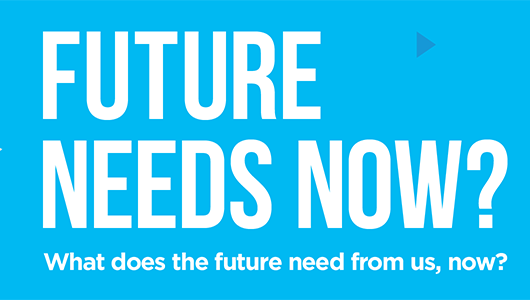The Philanthropy Australia 2021 National Conference. What does the future need from us, now?
The Philanthropy Australia 2021 National Conference delivered an exceptional group of presenters from across the globe who dissected and explored the theme of ‘What does the future need from us, now?’.
Across the 2-day conference, the overarching message was that philanthropy in Australia needs to grow, and make bold financial commitments to invest in social capital and opportunity – rather than crisis management.
There is an inherent need for funders to change the status quo of funding programs exclusively and consider the operational costs to deliver that program. The financial and service delivery challenges brought about by the global pandemic unveiled a hard truth faced by many NFPs. Only 65% of charities in Australia had enough surplus to keep the doors open for the proceeding 6 months. Many funders showed flexibility and supported NFPs with funding to ‘keep the lights on’. But what happens next time there is a disaster or crisis? As Catriona Fay from Perpetual Private stated “our future would benefit from more philanthropy directed towards preparing for disasters, not just responding to them”.
Collaboration and Trust
A resounding theme weaved through each session was the importance of true collaboration and trust between philanthropy and NFPs. Valerie Chan from the U.S. based MacArthur Foundation spoke of their commitment to NFP partners to succeed, which can only be achieved by working in partnership – ask NFP partners what they need, listen to what they say, help them deliver on their mission. The MacArthur Foundation is working towards trust-based philanthropy – by permitting flexibility with budgets, less arduous reporting requirements and funding operational costs. Based on research conducted in the U.S. over 3 years, it was determined the minimum operational costs required to deliver a program is 29%, which resulted in the Foundations’ policy being amended to include a 29% Indirect Cost Rate on all program grants. This example demonstrates the positive outcomes that can be achieved when a funder engages, listens and responds to the needs of their NFP partners.
Blueprint for Philanthropy
Of particular interest, was the ‘Blueprint for Philanthropy’ session with Former Prime Minister Hon John Howard OM AC, and David Gonski AC. In 1999 John Howard gathered select business leaders including David Gonski to tap into what he described as the “natural generosity of Australian’s”. The concept was to motivate, not force people to give. In 2001, Private Ancillary Fund (PAF) legislation and regulation was introduced to protect privacy but ensure appropriate giving.
The generosity of Australian’s will be encouraged further, with Philanthropy Australia’s Blueprint to Grow Giving; an incredible strategy outlining how the philanthropic, not-for-profit, business and government sectors can work together, to double structured giving by 2030. A comment made by The Honourable Ratna Omidvar CM, Senator For Ontario, Canada “the law can make it difficult for Philanthropists to donate to NFPs” is reflected here in Australia, with PA advocating for Australian laws to change.
Future Philanthropy. What does the future need from us, now?
The adversity of the last 12-months has put a spotlight on Philanthropy in Australia.
Future philanthropy needs to partner, collaborate, and respond to the needs of the NFP sector. And the NFP sector must invest in good governance, and communicate their needs to funders. There is an opportunity now to direct significant resources to build social capital that is sustainable and able to handle whatever the future brings.

The Philanthropy Australia 2021 National Conference. What does the future need from us, now?
If you would like to delve into any of the PA content in more detail, one of our client managers would be happy to chat with you.
You can read more reflections here from the Philanthropy Australia 2021 National Conference.